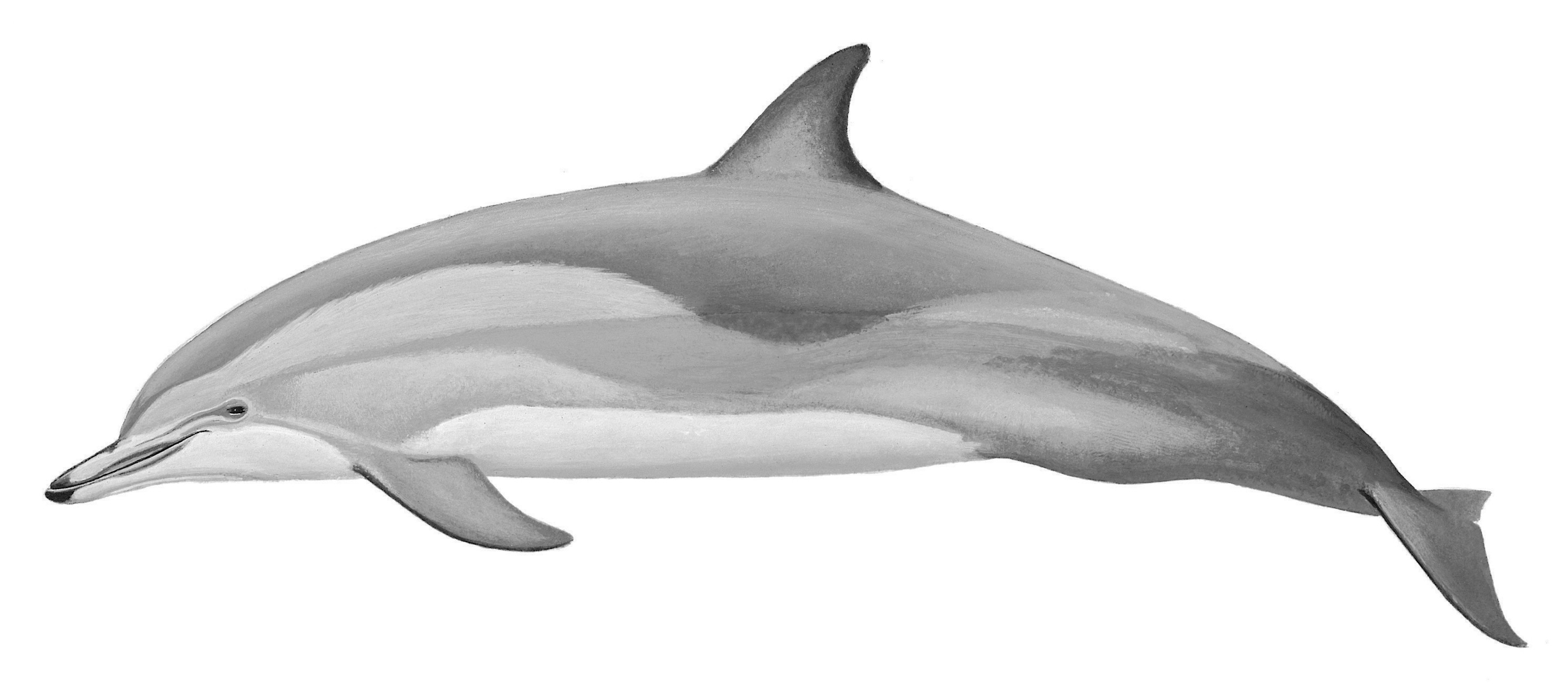CLYMENE DOLPHIN
Stenella clymene (Gray 1850)
Order Cetacea : Family Delphinidae
DESCRIPTION. This is a small dolphin that averages about 1.8 m in length and 75 kg in weight. It can be distinguished by its moderately short beak; tripartite color pattern of white belly, light gray sides, dark cape that dips in two points (above the eye and below the dorsal fin); and distinctive facial markings including black eye ring, dark lips and snout tip, and dark line on top of snout, sometimes incorporating a mustache near the apex of the melon. The cape is sometimes obscured by blotchy patches on the sides, and occasionally a faint spinal blaze may be present. The dorsal fin is gray but bordered with dark margins. Average total number of teeth is 200.

DISTRIBUTION. The Clymene dolphin is endemic to the tropical and subtropical waters of the Atlantic Ocean. This species is relatively common in the Gulf of Mexico, where it usually occurs in waters deeper than 100 m (328 ft.). There have been several strandings along the Texas coast, including Padre and Mustang Islands. The most recent stranding period (2002–2014) included three strandings of this dolphin from Jefferson, Galveston, and Kleberg counties.
SUBSPECIES. Monotypic species.
HABITS. This dolphin was not described as a distinct species until 1981 and is rarely observed alive. Consequently, the Clymene dolphin is one of the most poorly known dolphins of the world.
It has been observed at sea only in deep water. These dolphins eat small fish and squid and appear to feed at night or in midwater depths. Squid remains found in their stomachs are of species that characteristically live at intermediate depths and surface at night.
These dolphins may leap and spin out of water, but their movements are not so high or complex as those of the spinner dolphin, S. longirostris. Stranding records from the Gulf of Mexico indicate that they are probably year-round residents of this region.
The Clymene dolphin is not found outside Atlantic waters, which is an unusual distribution for a tropically distributed cetacean. This dolphin may possibly have evolved in the Atlantic Ocean.
POPULATION STATUS. Common; strandings and observations. This is another offshore, deepwater dolphin that occasionally strands along the Texas coast. The Clymene dolphin's rarity in the stranding record is not indicative of its status in offshore waters. During the GulfCet surveys these dolphins were sighted numerous times, in groups of 2–200 individuals, in areas along the 100 m isobath.
CONSERVATION STATUS. The Clymene dolphin species does not appear on the federal or state list of concerned species. The IUCN lists its status as least concern. There is no reason to suspect any conservation problems, although accurate population estimates and trends are not available. In the past, S. clymene was regarded as a rare cetacean because of taxonomic confusion with S. longirostris, from which it was recently differentiated.
From The Mammals of Texas, Seventh Edition by David J. Schmidly and Robert D. Bradley, copyright © 1994, 2004, 2016. Courtesy of the University of Texas Press.
Natural Science Research Laboratory
-
Address
Museum of Texas Tech University, 3301 4th street, Lubbock, TX 79409 -
Phone
806.742.2486 -
Email
nsrl.museum@ttu.edu

